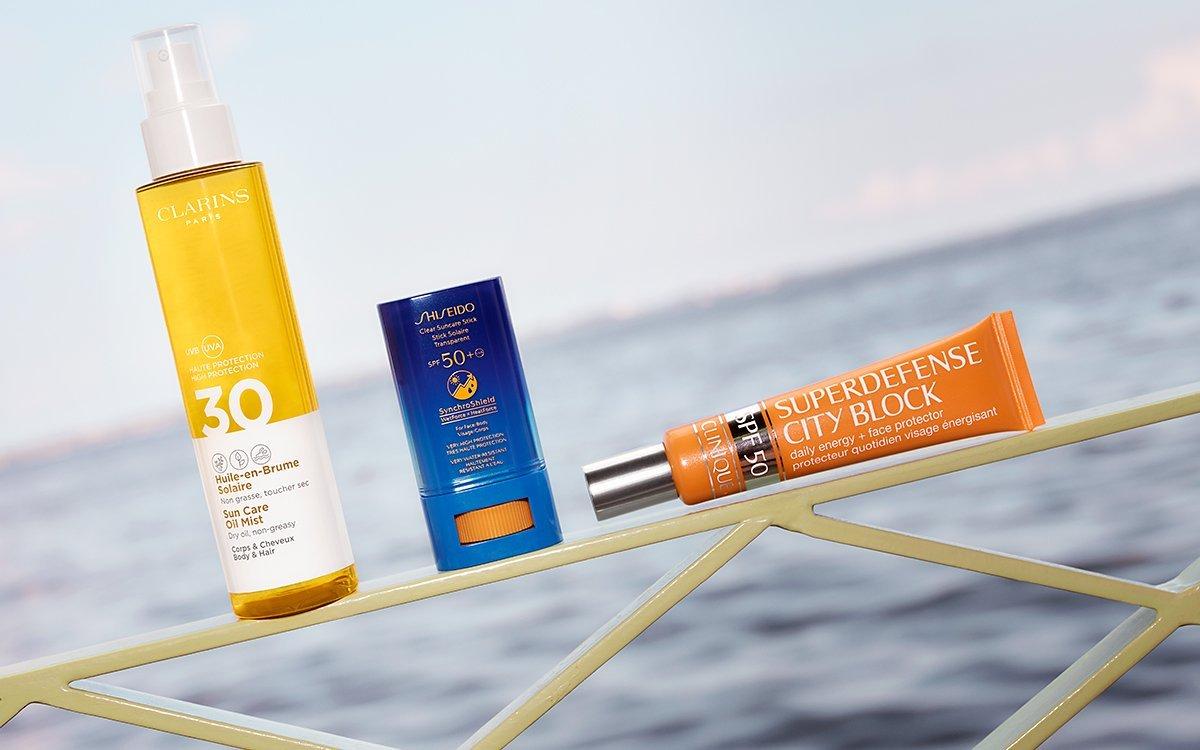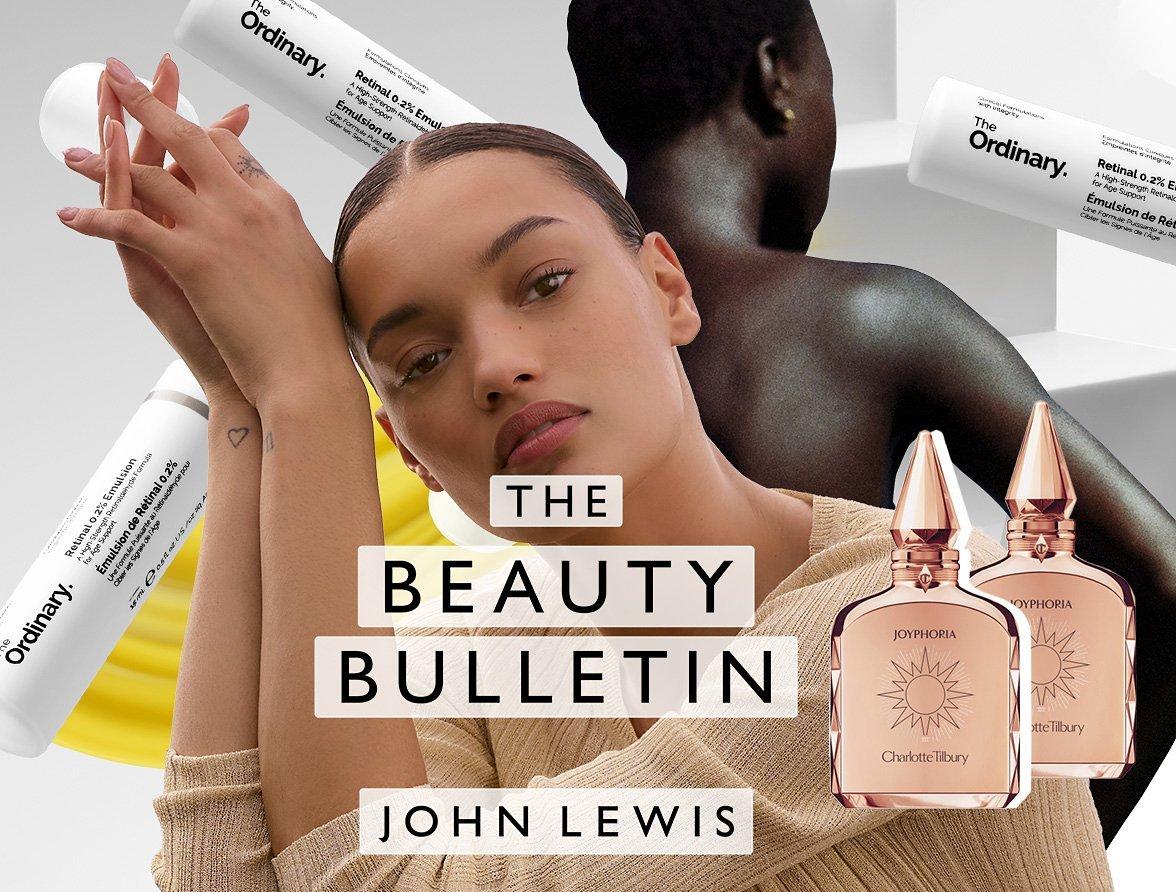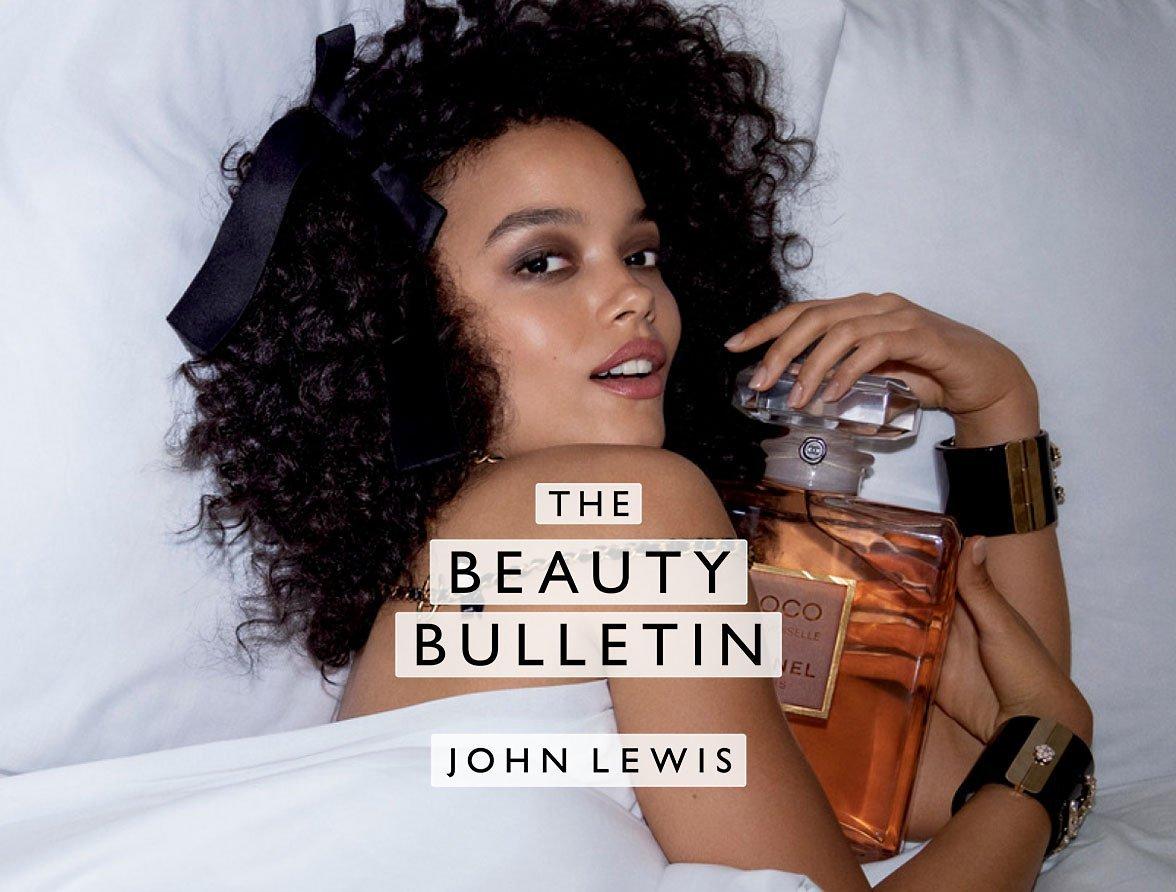Beauty Tips & Inspiration
What’s the best SPF for you?
Your every suncare problem solved – from which and when to apply, to how much and where
There’s a fine line between sunkissed and sun-singed. SPF is non-negotiable in any skincare routine, come rain or shine. You can spend £££ on moisturiser, but it won’t make a real difference if you don’t use an effective SPF, every day.
Studies show that natural sunlight can improve serotonin levels, lower blood pressure and help strengthen bones, but there is no such thing as a ‘safe’ tan.
‘The safest way to get a tan is slowly and through sunscreen,’ says consultant dermatologist Dr Nick Lowe. ‘You’ll still have some sun damage – that’s what a tan is – but you will have less burn.’
Befuddled by the array of factors, acronyms and even star-ratings attributed to sunscreens, unsure when to use SPF, how much to use and how often? In strolls this handy guide…
What’s the difference between UVA and UVB?
Both UVA and UVB rays harm the skin but the effects they have are a little different, so it’s important that you’re protected against both (hence ‘broad-spectrum’ sunscreen). Think of UVA as the ageing rays and UVB as the burning ones.
'UVA are the deepest penetrating and most ageing ultraviolet rays,’ says Dr Lowe. UVB rays aren’t able to penetrate the skin as deeply, due to their shorter wavelengths, but they cause more damage to the surface and are the cause of most skin cancers.
How high an SPF should I use?
The sun protection factor (SPF) is the measure of how long a sunscreen will protect you from UVB (and only UVB) rays compared to if you weren’t wearing any. However, a sunscreen with an SPF of 30 is not twice as effective as one with an SPF of 15. In fact, SPF15 filters about 93% of UVB rays, SPF30 filters 97% and SPF50 filters 98%. Layering all of these factors on top of each other will also never give you 100% coverage.
Are there different factors for different skin tones?
No. All skins burn and all need a broad-spectrum, high-SPF sunscreen.
What’s the difference between physical and chemical sunscreen?
Physical sunscreens (or UV reflectors) block the sun’s rays on the surface of the skin, while chemical sunscreens (or UV absorbers) absorb into the skin, where they convert the sun’s rays into heat and release them. Dr Lowe warns against getting too bogged down in the word ‘chemical.’
‘There’s a lot of hocus pocus about chemical vs physical sunscreens as all sunscreens are made up of chemicals,’ he says. ‘Even so-called “chemical-free” or physical sunscreens are made up of titanium dioxides and zinc oxides which are, of course, chemicals.
‘In general, chemical sunscreens tend to be best for tanning, while sensitive skin and rosacea sufferers often benefit from physical sunscreens as they deflect heat from the sun’s energy away from the skin.’
How much SPF should I use?
For the face SPF is the final layer in your skincare routine – apply two fingers’ worth (enough for face, neck, décolletage and hands) and wait 60 seconds for it to fix before doing your makeup.
For the body you’ll need about one teaspoon of SPF for your arms, two for your legs and two for your torso (front and back).
Apply 30 minutes before sun exposure and reapply every two hours.
Location matters
Did you know that UV rays reflect off sand and sea foam, making them more potent? Try to limit exposure between 11am and 4pm, and add some antioxidant insurance in the form of a vitamin C serum, which can be layered under your SPF to help neutralise damaging UV rays.
The final sunscreen rule? Reapply, reapply, reapply! Every two hours and immediately after swimming.







